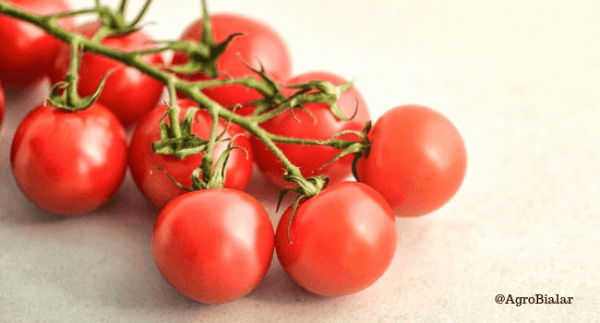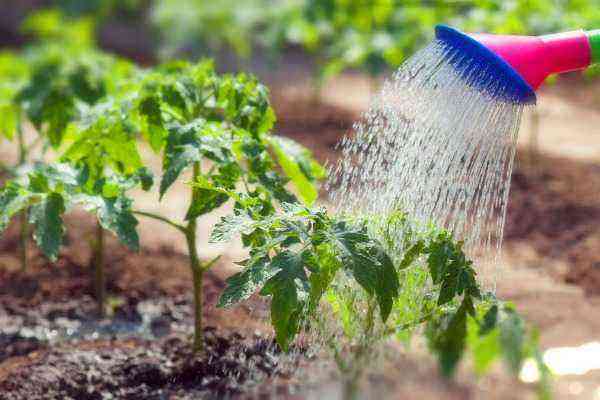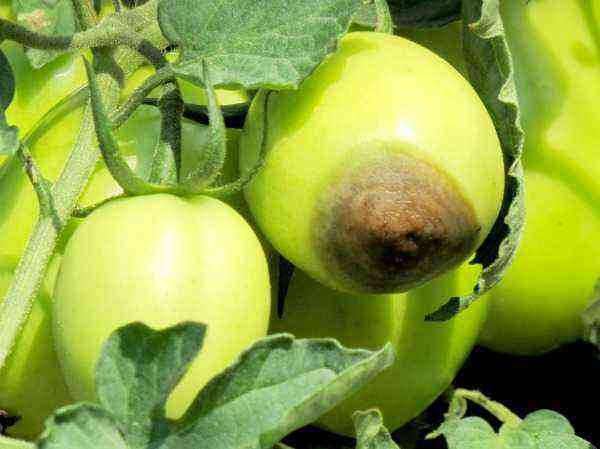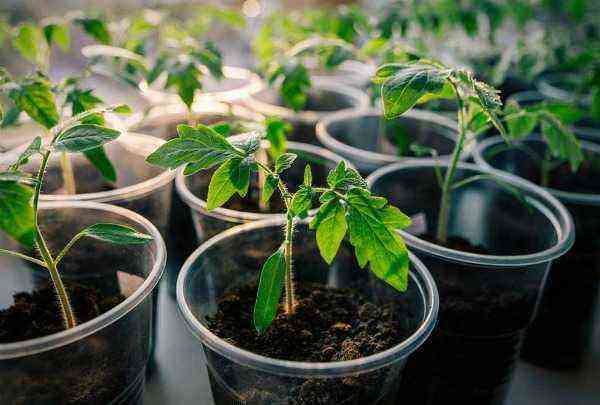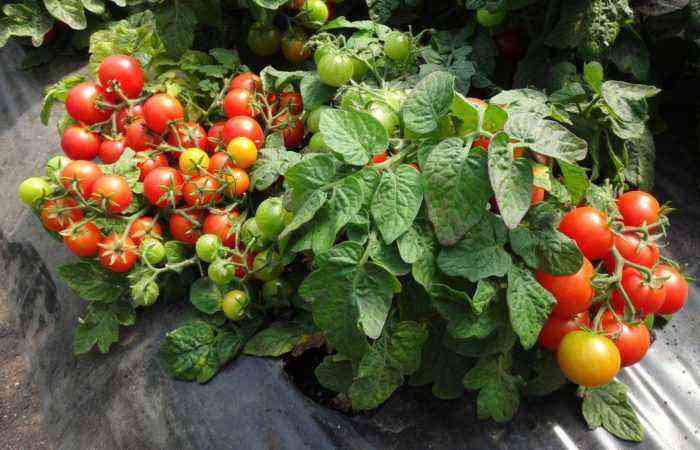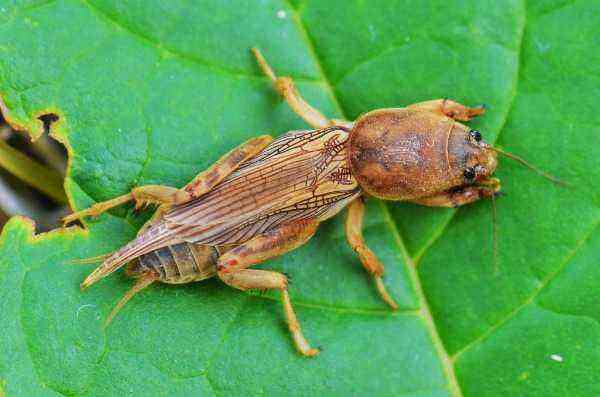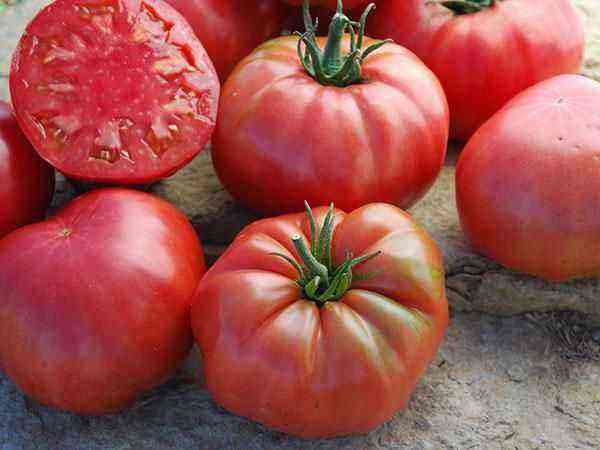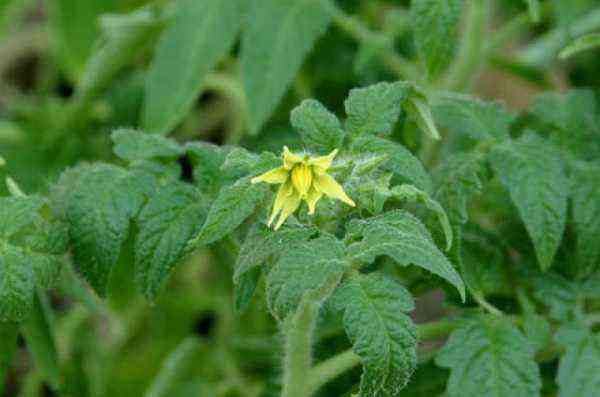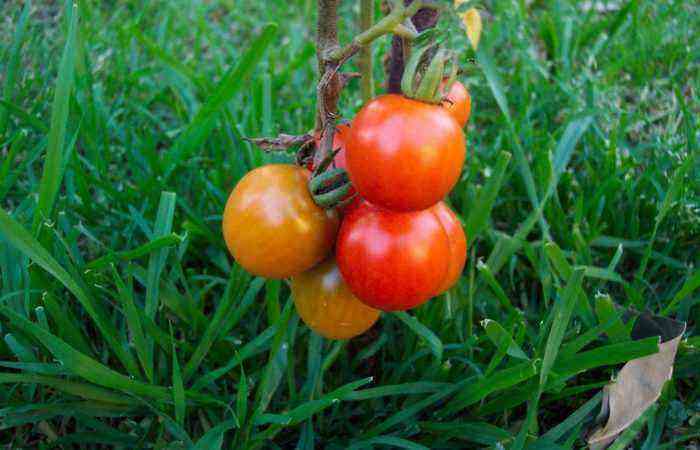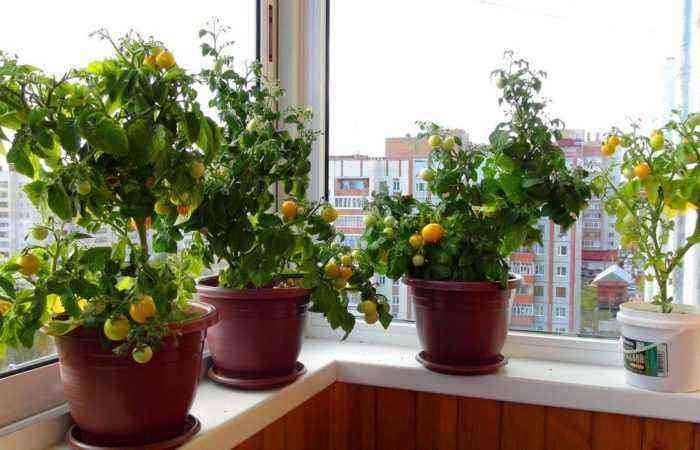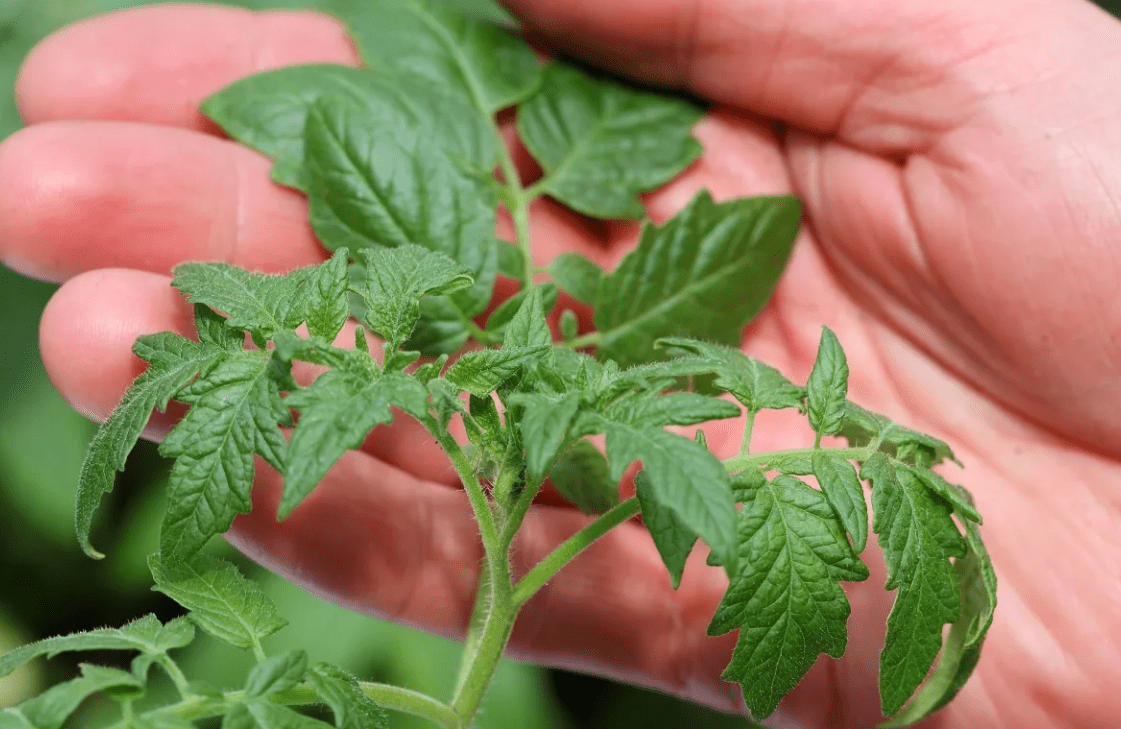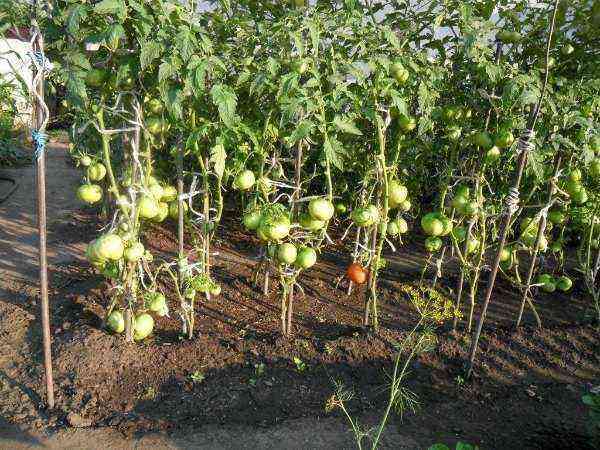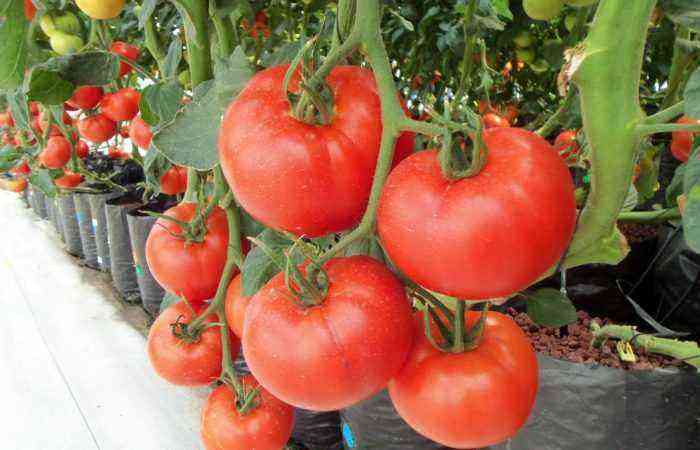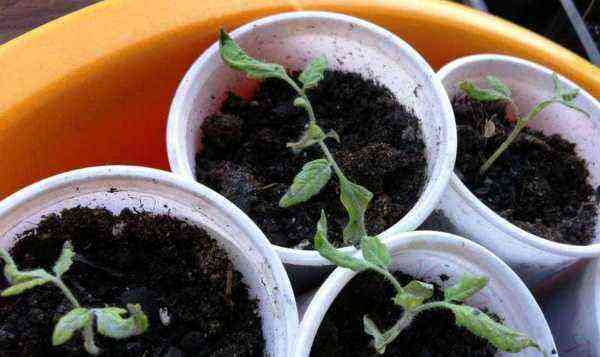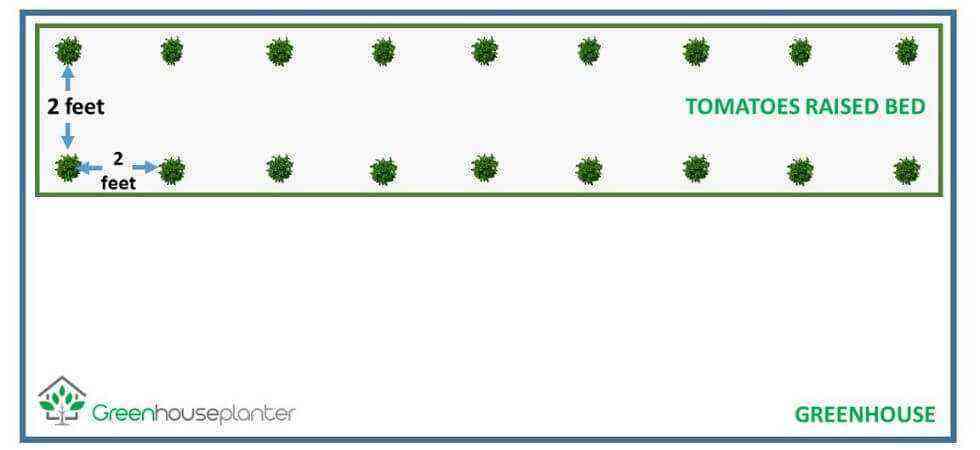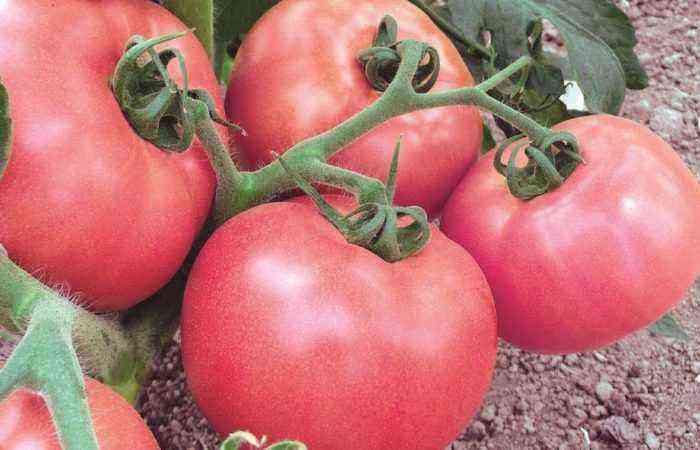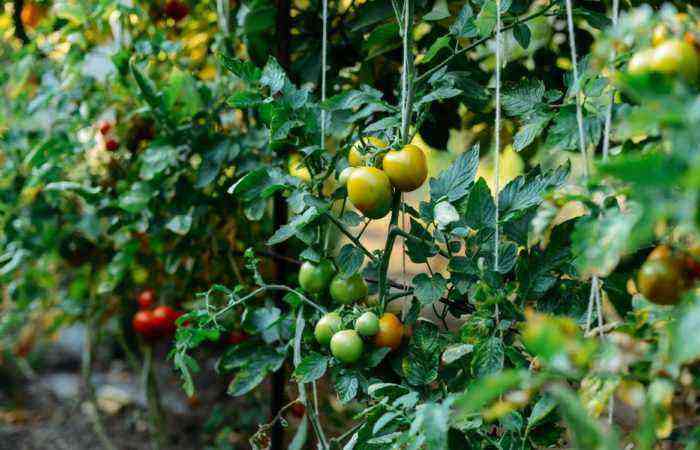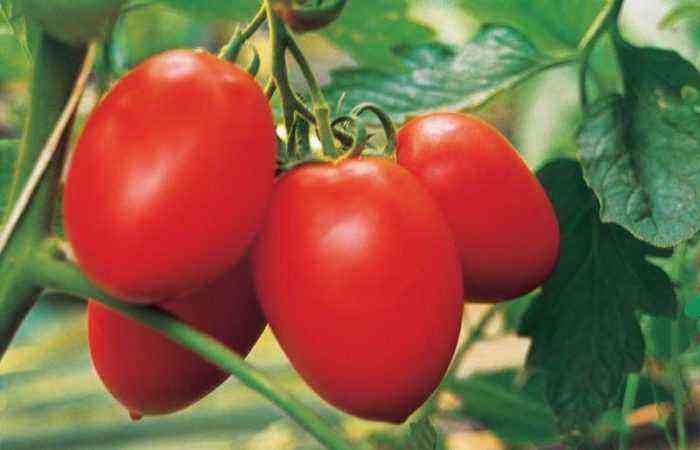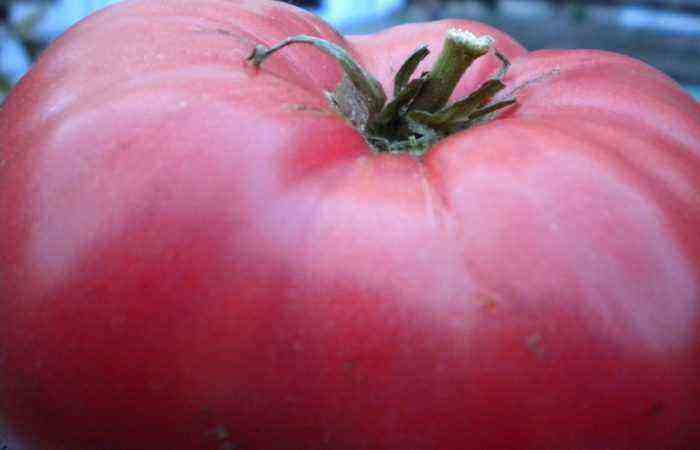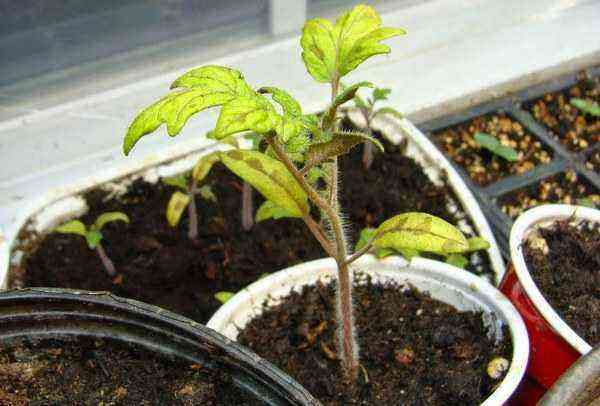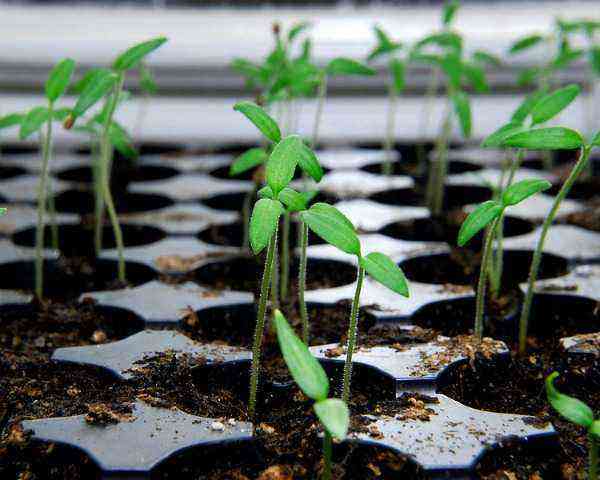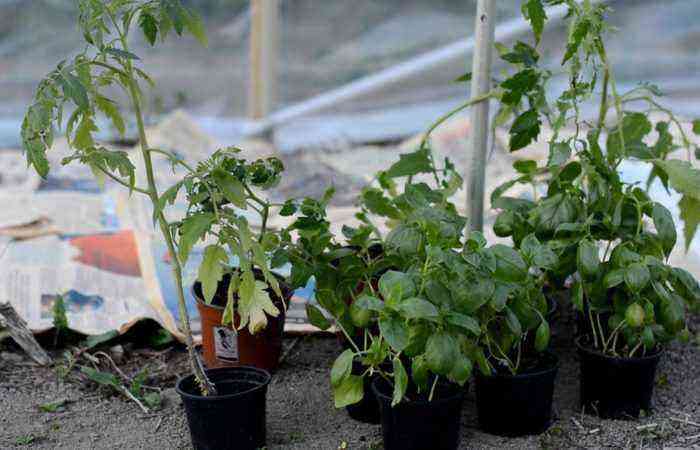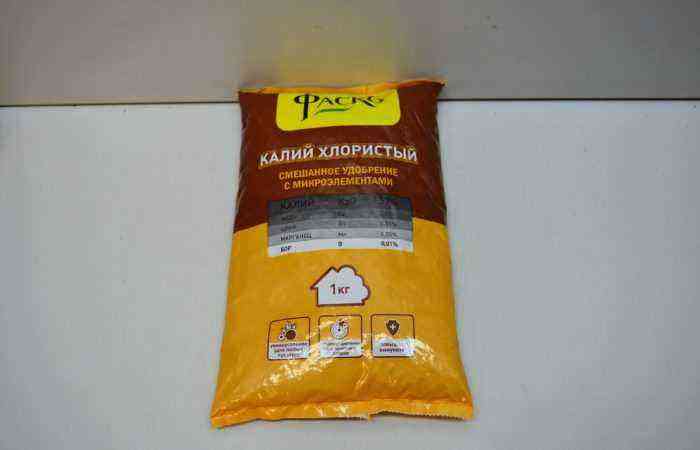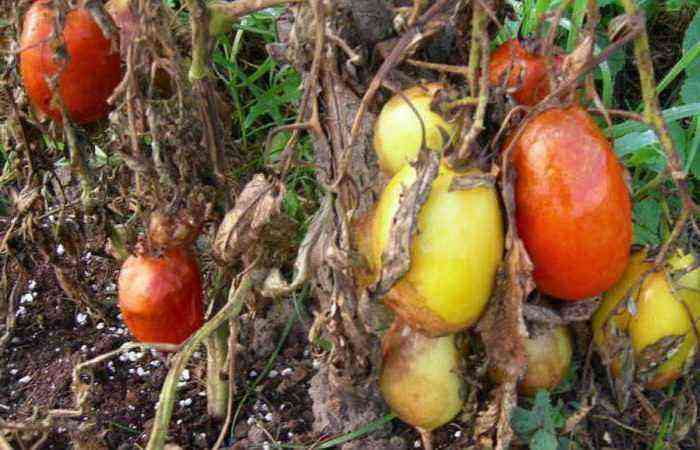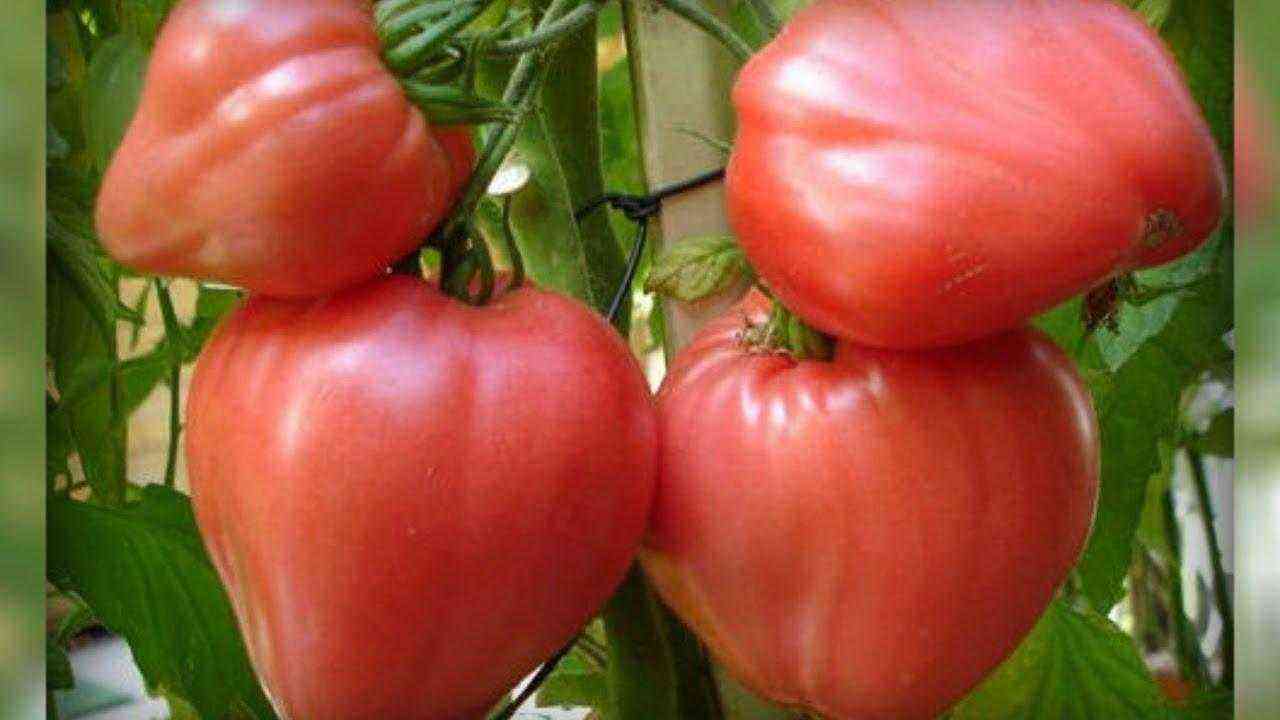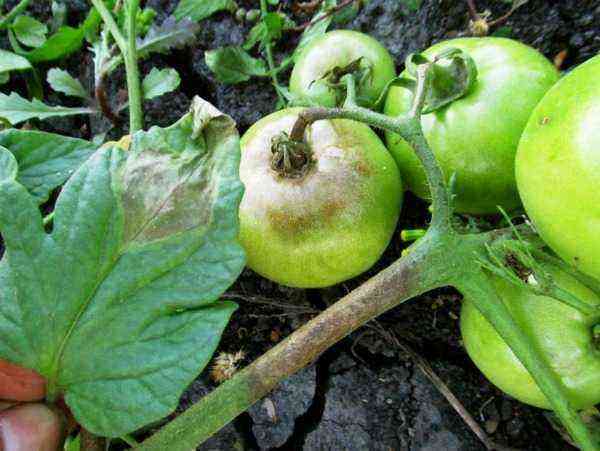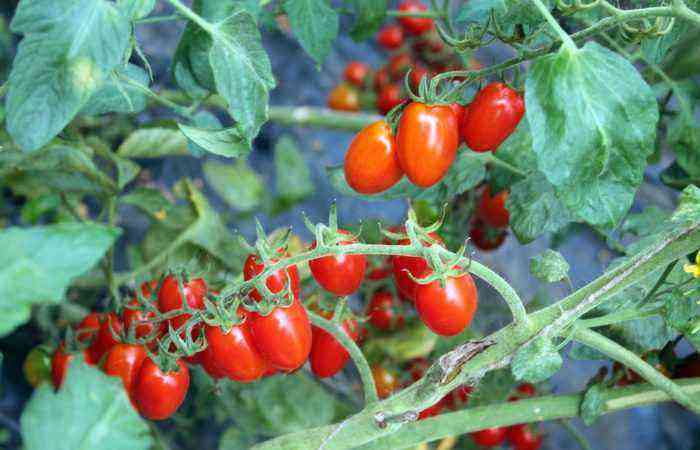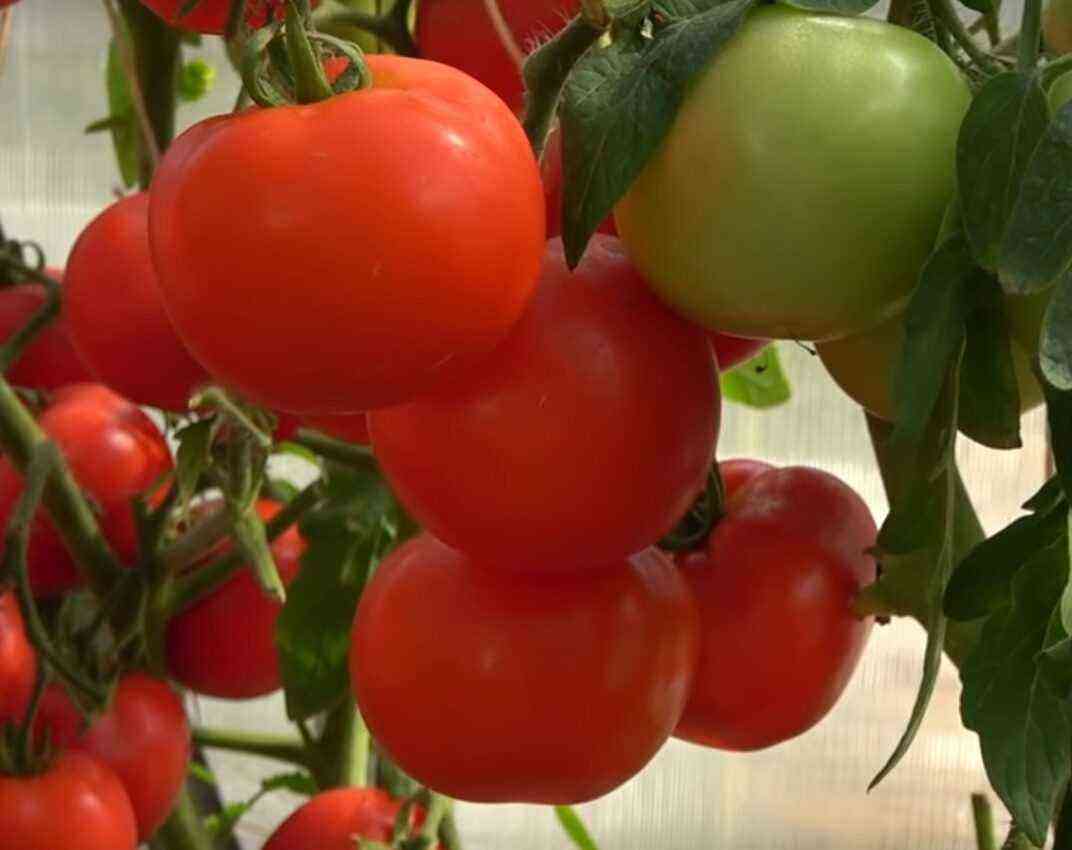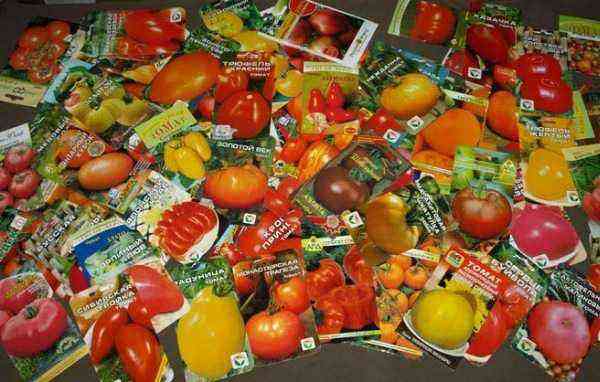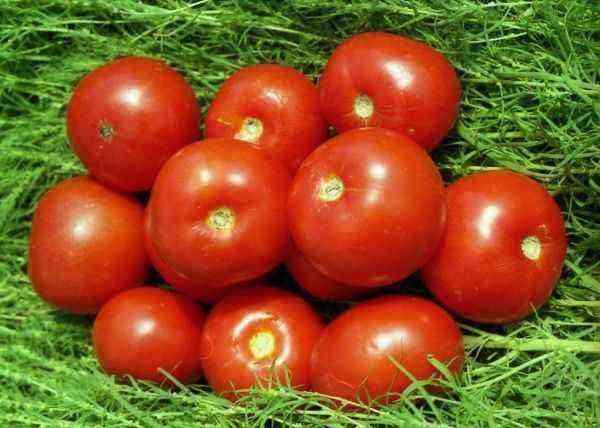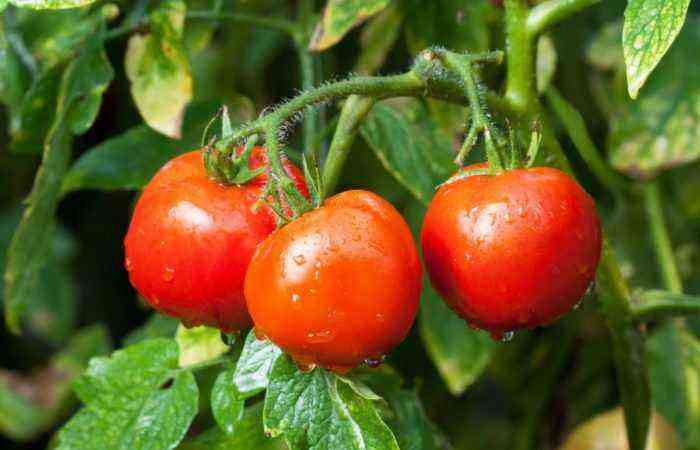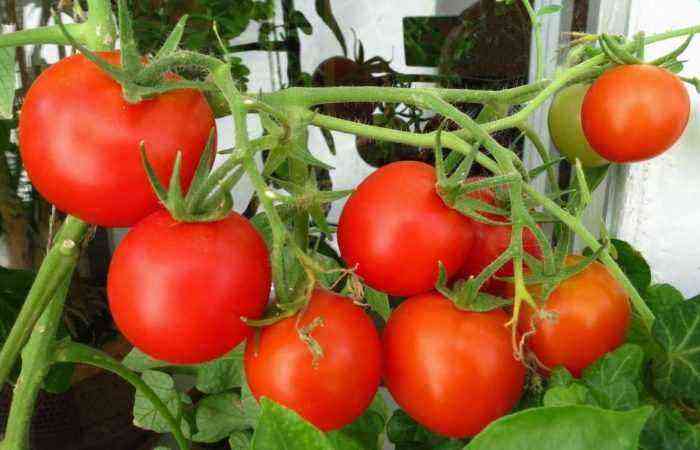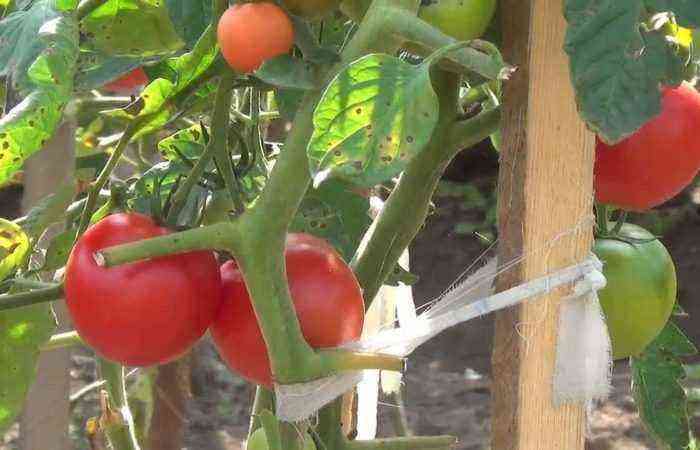It often happens that tomato seedlings outgrow and become weakened. Especially often this happens to beginner gardeners who grow tomatoes from seeds for the first time with their own hands. In order to save the future harvest, overgrown seedlings need special care, and they need to be planted in the garden differently than ordinary seedlings.
Reasons for overgrowing seedlings

Tomato seedlings can outgrow if the gardener does not properly care for her or if she grows in conditions that are not suitable for her.
The main reasons for overgrowth are:
- If the seedlings were sown very early or the seedlings sprouted excessively densely.
- A pickup carried out out of time.
- If the daylight hours are still too short, then young shoots will begin to stretch very quickly due to lack of light.
- The room where the seedlings are standing is too hot (more than 24-25 degrees).
- Tomatoes are watered too abundantly and often.
- Too dry air.
- If the transplantation of tomatoes to the garden was delayed (for example, due to return spring frosts).
What to do if the seedlings have overgrown

Tomato seedlings, which reach a height of about 20 centimeters, are considered ideal, ready for planting in a greenhouse or garden bed, have a thick purple stem and dense foliage.
- If the seedlings reach a height of up to 30 centimeters, then this is considered a slight stretching and there is no need to take any special measures for planting or caring for the summer resident.
- However, if their height is from 30 to 55 centimeters, then this is already considered an overgrown seedling, and some agrotechnical tricks will have to be applied to it to help save the crop.
And plants whose height is 55 centimeters or more, as a rule, already have formed flower buds, and experts do not recommend replanting flowering tomatoes.
During the landing of elongated seedlings on the garden gardeners resort to various tricks. At the same time, they plant such seedlings in different ways. The best of them will be described below.
Incline landing
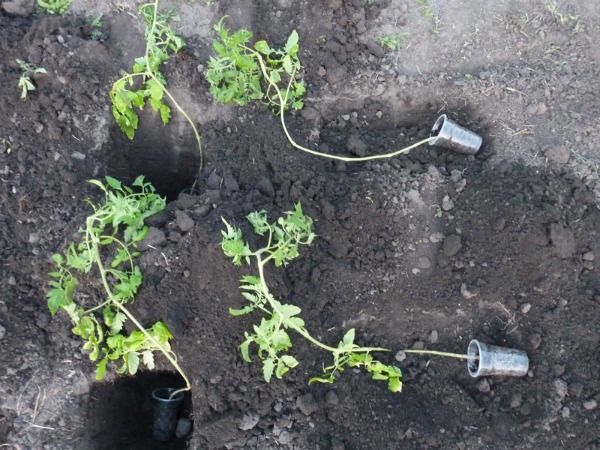
First of all, on the prepared site, you need to dig grooves, reaching a depth of about 10 centimeters. Humus and fertilizers are poured into each of them, which are mixed with a small amount of soil. After that, the grooves are filled with water and left until it is completely absorbed into the ground.
All the lower foliage on the bushes is removed, and they are laid in the grooves almost horizontally. After the grooves are covered with earth, only the tops of the bushes no more than 30 centimeters high should remain above the surface of the site, which must be tied to the stakes so that they are located vertically.
The distance between the bushes in the garden should be at least 20 centimeters.
When the plant is watered, the surface of the site is covered with a layer of mulch (hay or sawdust).
The part of the bush that is in the soil will eventually develop additional roots, which will favorably affect the growth and fruiting of tomatoes.
Pruning the top of the seedlings

This method can be used only if at least three weeks are left before planting seedlings in open ground. To do this, cut off the tops of overgrown bushes and put them on rooting in the water.
After about 20 days, they should form strong roots, after which it will be possible to proceed with their transplantation into the ground. The lower part of the cut bush can also be planted in the garden, where it will develop side branches.
This method not only allows you to save the stretched seedlings, but also helps to significantly increase its number.
Depth (vertical landing)
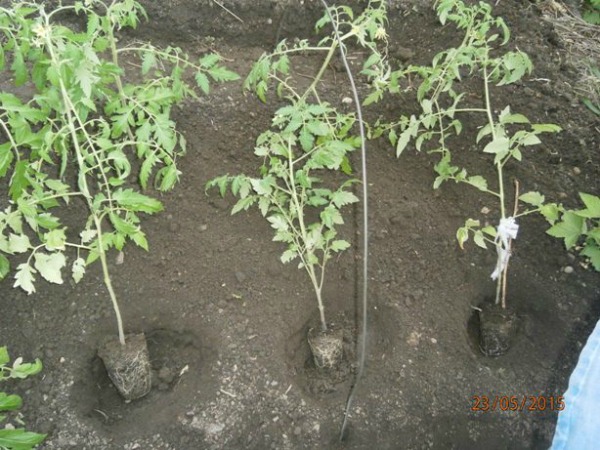
A method called vertical planting is used only if the seedlings are not stretched too much.
Bury them like this:
- Prepare a planting hole that is deeper than usual. Pour humus and fertilizer on its bottom.
- Pour 5 liters of water into each well.
- Pull the bush out of the cup and tear off all the lower leaf plates from it. Install it in the prepared hole so that the top rises above the soil surface no more than 30 centimeters high.
- Fill the hole with soil, and tie the bush to a support.
Tomatoes planted in this way will develop a powerful root system and, with proper care, will give a good harvest.
Ring landing
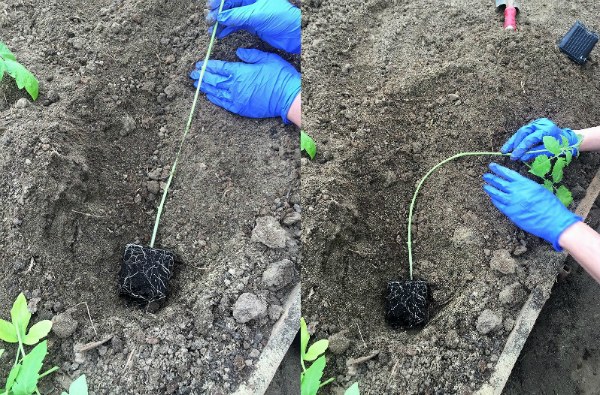
This is another way of planting highly elongated tomato seedlings, which is used by gardeners somewhat less frequently than those listed above, but it is not inferior to them in terms of efficiency.
- First, round holes are made on the site, the depth and diameter of which should reach 25 centimeters.
- A bush is installed in the center of the hole along with a clod of earth, after which its stem is carefully and slowly rounded in the hole, while trying to press it against the walls.
- The upper part of the seedling is brought up so that it is located vertically above the surface of the plot.
- Fill the hole with soil and tamp the middle well, then water the planted plants abundantly.
- 30 minutes after watering, pour enough earth into the hole so that it is flush with the surface of the bed.
- Cover the surface of the site with a five-centimeter layer of mulch, which will protect the tomatoes from overheating and drying out.
What to do if there is still a lot of time before transplanting into the ground?
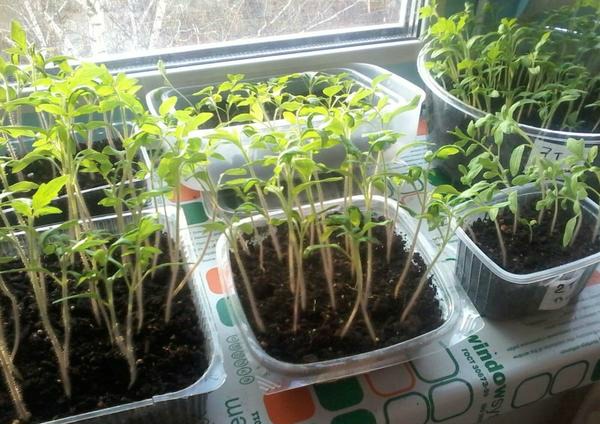
- If tomato seedlings have stretched out that have not yet been dived (they are in a common box), then it is recommended to pour a small amount of earth under each plant (1 tbsp each).
This will give a good result, the bushes will become stronger and their growth will slow down for a while. However, make sure that the distance between the surface of the substrate and the cotyledon leaves is at least 20–30 mm.
- If the overgrown seedlings have already been picked into separate cups, then pour the earth mixture directly into the containers.
If this is not possible, then the plant can be transplanted into higher cups, while trying to deepen them more than usual. Instead of transplanting, you can “build up” old cups, for this they are wrapped with a non-toxic moisture-proof material. After that, the required amount of soil mixture is added to them.
- If the bushes have grown very strongly and have already begun to bloom, and there is still a lot of time before transplanting them to the garden, then it is recommended to cut off the upper parts of the plants about 20 centimeters long, treat the cut points with Kornevin and plant them in new cups immediately into the substrate.
Such apical cuttings will take root in just a few days. And the lower parts of the bushes, after a short time, will grow new tops, while there will be several of them, which can positively affect the future harvest.
Tomato seedlings stretched out a lot, what to do – video
Prevention of pulling seedlings
In order to prevent the pulling of tomato seedlings, one must not neglect preventive measures. To do this, you should pay attention to such points in the care of seedlings:
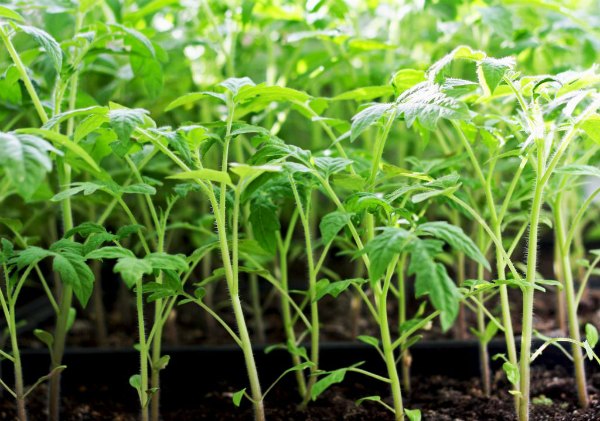
- So that the seedlings do not stretch, they need a large amount of light. Therefore, it is recommended to illuminate them, while the optimal daylight hours vary from 12 to 16 hours, depending on the age of the seedlings.
- Grown seedlings should be kept cool. It is best if during the daytime the air temperature is about 18 degrees, and at night – at least 16 degrees.
- Water the plant as needed. While they are still too young, watering is carried out only after the top layer of the substrate in the container dries. When the seedlings grow up and are picked into separate cups, it will be necessary to moisten the soil mixture only after the clod of earth in the container dries completely.
- When feeding seedlings, you need to remember that an excessively large amount of nitrogen in the soil accelerates the growth of both the green mass and the stem. Therefore, you need to responsibly approach the choice of a suitable fertilizer and use nitrogen only if the foliage has become faded.
Experts recommend using phosphorus and potassium for feeding seedlings, thanks to them the bushes will become more powerful and develop a good root system.
Tips from seasoned gardeners
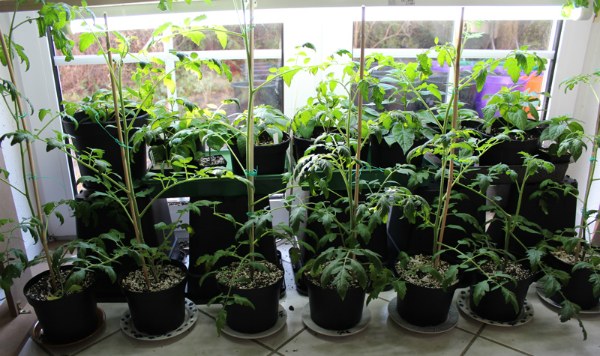
If your tomato seedlings outgrow, then you can use the advice of experienced gardeners:
- Take very sharp disinfected scissors and cut off the cotyledons and lower leaf plates with them so that small stumps 10 to 20 millimeters long remain. In this case, the growth of seedlings will slow down for a while, while their stems will become stronger and thicker.
- Thanks to phosphorus and potassium, tomatoes become powerful, moreover, these elements do not contribute to the accelerated growth of plants. In this regard, some gardeners recommend using superphosphate and wood ash to feed young tomatoes.
- To slow down the growth of actively developing plants, they must be carefully transferred into larger cups, while trying to keep the clod of earth intact.
- Also, many experienced summer residents advise that stretching seedlings be treated with Athlete, which can be found in a specialized store. It inhibits the growth of plants and promotes the development of a powerful root system.
The bushes can be sprayed with a solution of the product in the evening, it is not recommended to do this during the day, as sunburn may appear on the foliage.
But it is better to pour 30-50 milligrams of Athlete’s solution under each plant that has four real leaf plates. For the best effect, the treatment can be repeated after one and a half to two weeks.
In order for the product to work most effectively, after processing it, the tomatoes are not watered for five days.
The tomato seedling has grown! What to do? – video
It’s no secret that it’s much better to prevent a tomato seedling from being pulled out than, after it outgrows, to desperately try to save a future crop. Therefore, do not neglect preventive measures and try to properly care for young plants.

